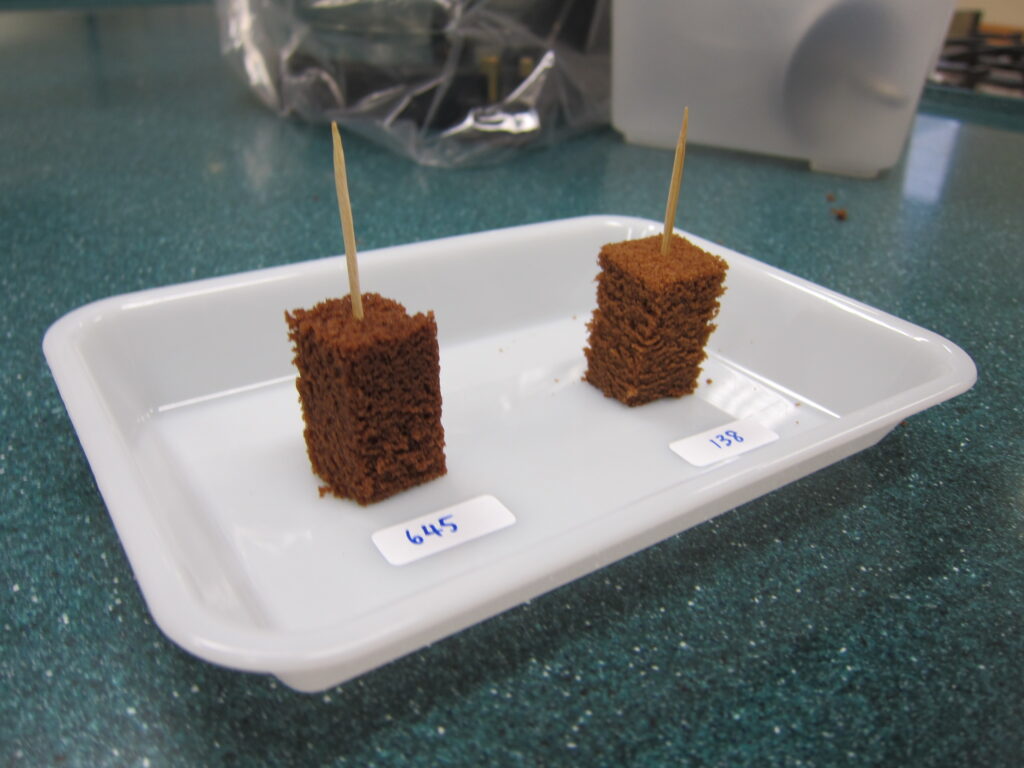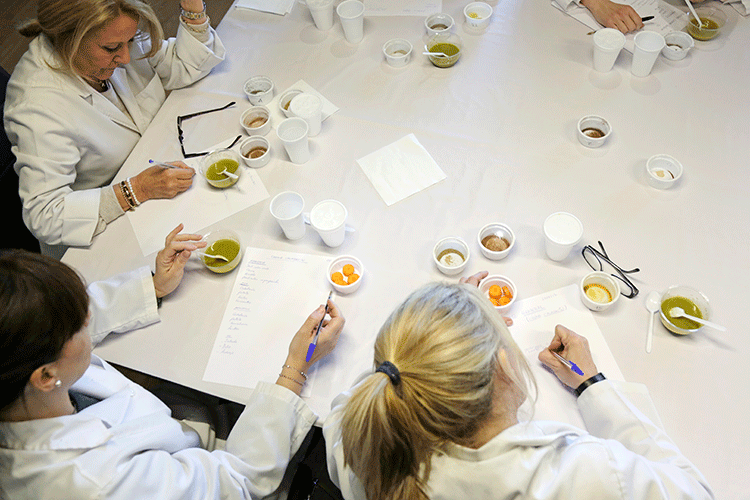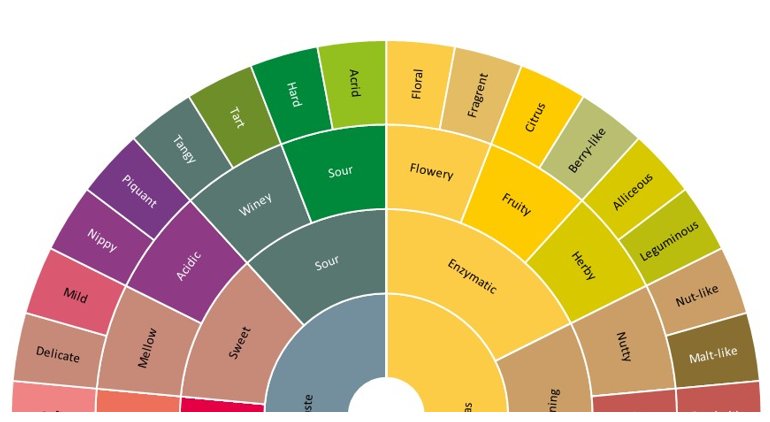Sensory testing environments and protocols are helpful if they follow standard sensory practices. An excellent sensory specialist follows these practices by getting actionable and consistent data. An experienced sensory panelist can break the guidelines, and one should completely know about the results and risks associated with it.
The sensory testing environment should not be near areas of extraneous noise and odour. For example, the meat industry should not be located near smokehouses. The sensory testing facility should be located on the ground floor or near the entrance.
Suppose the company has security concerns; the sensory booth should be built in a secure area. While building the sensory testing areas, the traffic system of panelists should be kept in mind. So, panelists can enter or exit the facility without passing through the processing area. It is one to prevent panelist’s biased responses.
This article outlines the optimal sensory testing environment, including climate control and the panelist’s performance.
1. Evaluation

A dedicated evaluation area is a vast room with tables and booths. It is essential to design the area as a quiet, uninterrupted environment where panelists are positioned to avoid facing and influencing each other.
In case temporary booths are not available, arrange the tables to avoid the influence of panelists. Provide adequate daylight-balanced fluorescent bulbs for the evaluation of colors and colourants. Sensory testing is integrated with product quality and development, so the ventilation area should be constructed permanently with the waiting room and booth area.
The space should be clean and comfortable and give a professional impression to the medical practitioner’s waiting room. Isolate the booth area from the processing area, as it serves as the heart of the operation. It must be clean and have a professional look.
The colors for this room can be neutral or non-distracting, with the availability of electricity. Keep this area noise-free to prevent distractions to the panelists’ concentration. The processing or preparation area requires adequate space for storage, a refrigerator, a frozen area, and other processing applications.
1.2 Area Climate Control
Use replaceable active cards filtered through ventilation to control the climate and maintain odor-free conditions in both areas. Positive pressure in these areas reduces the odour transfer from the processing area. Ensure that the cleaning supplies in the discussion and booth area don’t add odour.
The area should be noise-free to prevent distractions. The temperature for the booth area is 20-22°C, and the relative humidity will be 50-55%. These conditions make the environment comfortable for panelists.
Adjust the table surface illumination to 300-500lx using a dimmer switch, while setting the illumination intensity for offices to 700-800lx. These details are established for the food testing protocols, and optimal conditions vary with the product.
2. Test Protocol Consideration
2.1 Sample Serving Procedure
Sample preparation and a standardized serving procedure require optimal evaluation conditions. The conditions involve consistent sample size and storage conditions to avoid biased results in the study of processes like cheddar cheese flavour.
It is the technician’s responsibility to ensure uniform conditions in sample preparation, storage, and serving to prevent visual issues that impact the panelists. This also involves the use of serving containers, serving with or without carriers, and a standardized number of samples per session.
2.2 Sample Size

Sample size influences the intensity score of texture characteristics. Sensory testing specialists specify sample size and shape to prevent variations. When deciding on a sample to serve, the sensory specialist should keep these questions in mind.
- What is the reason for this study?
- What is the portion size of the product?
- How large is the mouthfeel of the product?
- What attributes will the panelist evaluate for the product?
2.3 Serving Temperature
The test protocols include the serving temperature and time that affect the sensory attributes. For example, the serving temperature of fluid milk is 15°C to improve volatile flavor, and the before-serving temperature for ice cream is -15°C to -13°C. The testing of the product is done to determine the holding time effects on sensor attributes if the product is supposed to be held for a longer period.
2.4 Serving Containers and Carriers
Selecting serving containers for convenient and maintained sensory properties of the tested products. For example, styrofoam cups are compatible and change the flavour of hot beverages. Carrier, which is used to test the sensory properties, can influence its identification. It can give false results, so conduct tests for products with or without a career.
2.5 Palate Cleansing, Swallowing and Expectoration
Palate cleansing is essential to remove the residue of the previous sample. According to the study, table water crackers affect the mouthfeel and taste. The palate cleanser is selected based on its neutrality.
Swallowing is essential to evaluate the post-integration effects and acceptability. Expect ration to avoid calorie intake and carry-over effects.
2.6 Instruction to Panelist

Instruction in verbal and written form is provided to panelists. Pre-tet the instructions for clarity because clear instructions should be provided to staff and technicians; they revise the information for understanding. Clear and well-written instructions will ensure that there is no communication gap between the people performing the study and the sensory specialist.
Samples are blind-labelled with three digital codes at random to prevent biased results. The sample orders are randomized to avoid artefacts from the presentation order.
2.7 Randomization and Blind Labelling
Samples are blind-labelled with three digital codes at random to prevent biased results. The simple orders are randomized to avoid artifacts from the presentation order.
3. Experimental Design
3.1 Designing a Study
The first step is to prioritize the primary objectives of designing a sensory study. An ineffective study doesn’t help to answer all significant test objectives, so it’s incapable. Sensory specialists should take additional resources if they think it’s impossible to design more studies. Sensory studies are complicated, and then they appear, and mistakes always occur. The complications that arise in the study are:
- Samples can be lost, contaminated and mishandled.
- Panelists drop out before the completion of the test sequence.
- Participants don’t follow the test protocols correctly and misunderstand instructions.
- Technicians can also make mistakes when serving in sequence.
- Fluctuations in temperature and other environmental conditions.
Well-designed tests can eliminate all these mistakes. After you redesign the study, write down a Skelton of statistical analysis. It provides a good idea about the freedom degree associated with tests. Sketching tables and figures are also helpful for the final report.
3.2 Design and Treatment Structure
In 1984, Milliken and Johnson elucidated the description of experimental design. They divided it into two basic structures: design structure and treatment structure. Sensor specialists defined the design structure when they collected the experimental units into blocks.
The treatment structure is defined as a set of treatments or samples that clients choose to study in their specific project. The randomized performance of sensory specialists links these two structures to create an experimental design for the study.
4. Panelist Consideration

Sensory testing studies play an essential role in quality control and product development. They involve incentives, input from human subjects and panelists, selection, screening, and performance assessment.
4.1 Incentive
Incentives include the motivation participation and ethical considerations. In sensory studies, incentives are essential to encourage participation. It can be monetary compensation gift cards, free products, and more opportunities for professional development, like training offers and certifications. The incentives influence the time commitment and efforts from panelists. Incent ves are designed to manage panelists without imposing unwanted influences. It will ensure voluntary participation and ethical standards.
4.2 Use of Human Subject
Researchers should get ethical approval from institution boards before involving human subjects in sensory studies. This ensures that the study implements ethical guidelines and protects the welfare and rights of participants. The panel must know about the purpose of the study, potential risks, procedures, and benefits. The documentation should be comprehensive and clear, helping the participants make the decision about their involvement.
4.3 Panelist Recruitment
Panelist recruitment strategies focus on identifying personnel who relate to the study’s target demographics. This can include factors like age, gender, dietary preferences, and cultural background. Recruiting channels include social media, professional networks, community organizations, and databases of existing participants. Appealing and clear Ads attract the relevant candidate.
4.4 Panelist Selection and Screening
Establish the selection criteria for panelists to ensure they are suitable for sensory studies. The factors can be health status, availability, and sensor acuity.
- Potential penalist individuals should be highly sensitive to sensory tests, such as detecting differences in taste, smell, texture, and appearance. The screening test identifies these individuals as having High sensory sensitivity.
- Penalists should be nonsmokers because smoking reduces the senses of taste and smell. Paneli must avoid strongly flavoured products like coffee, spicy foods, and garlic before testing so their palate is clean and unbiased.
- The screening process involves a questioning interview to ask about their health, lifestyle, and dietary habits. It also covers their commitment and interest. Basic sensory tests, such as asking individuals about the taste of products like sour, salty, bitter, and aromas, will also be conducted.
- Discrimination tests help to determine an individual’s ability to differentiate products. The panel is asked to identify odd samples out of three, called triangle tests. The panel may be tested on the basis of his/her preferences and hedonic ratings. Forex ample how much they dislike or like the product?
4.5 Training of Panelist

After selecting the panelists, they undergo training to standardize evaluations and improve their ability to identify and describe sensory characteristics.
- Training includes teaching the panelists about the sensory characteristics of products that they will evaluate, such as flavor, texture, aroma, and appearance.
- Calibration sessions involve regular sessions where the panelist evaluates the standards for consistent evaluation.
- They learn about the use of sensory vocabulary to describe their perception accurately.
- Conduct the mock tests to check the ability of panelists with the testing process.
4.6 Panelist Performance Assessment
Panelist performance helps to maintain the quality of sensory tests. Achieve this by providing regular feedback to panelists on their improvements and performance. Monitor the consistency and reliability of panelists over time by statistical analysis of their work to identify any inconsistency. Conduct training sessions to refresh their skills and knowledge.
Rotate the panelists to avoid fatigue and reinforce fresh perspectives. Replace the panelists who fail to meet the standards.
Use performance monitoring tools like control charts and panelist scores. Control charts monitor an individual’s performance over time and identify shifts and trends in panelist performance that require improvement.
Establish a score system based on criteria consistency, accuracy and reliability to evaluate the performance of panelists.
5. Analysis
The final phase of sensory evaluation involves analyzing data to gain insights and make decisions. It requires statistical and qualitative methods to let the panelist draw conclusions about the sensory attributes of the product. This section provides the best practices to analyze the data.
5.1 Importance of Analysis

Accurate analysis helps to understand the strengths and weaknesses of products based on sensory characteristics. It helps to make scientific decisions related to product quality and performance. Moreover, it identifies patterns and trends that provide more insights into consumer preferences.
5.2 Data Preparation
Before analysis, make sure that the Data is clear and consistent without errors. This will provide valid and reliable results. Normalized data is comparable when dealing with scales and units of measurement. Coding categorizes responses into themes and patterns for better analysis.
5.3 Statistical Methods
Descriptive statistics measure basic statistics like mean, median, mode, or standard deviations to understand data better.
ANOVA determines the difference between the mean of different groups of samples.
5.4 Multivariate Analysis
Cluster analysis and component analysis help to reduce data dimensionality and identify the relation between sample and sensory attributes.
Use regression analysis to identify sensory outcomes and determine the factors that influence sensory attributes.
Qualitative methods used for sensory analysis are thermal analysis and content analysis, which help to analyze qualitative data.
5.5 Sensory Mapping
(i.) Radar charts/ spider plots
These charts represent the sensory profile of a product with the intensity of different attributes. They help compare the product with different sensory dimensions.
(ii.) Preference Mapping
It provides data integrated with consumer preferences that represent the relationship between consumer liking and sensory characteristics.
(iii.) Heatmaps
Heatmaps visualize the data intensity of the various samples or characteristics and highlight the areas of concern.
5.6 Consistent Improvement
Implement the feedback loop that involves the analysis of data and inform about the future evaluation and study designs. It continuously improves the quality.
Use the analysis results to benchmark against historical data and competitors. This will help you track the process and identify areas for improvement.
5.7 Ethical Considerations
Ensure that all the analysis data is transparent to build trust and credibility. Take the steps to prevent the business from the result of the analysis process.
6. Conclusion
Sensory testing environments and protocols need standardized practices. Design the evaluation area with dedicated plans, sufficient lighting, ventilation, adequate space, and electricity facilities. Control the climate in the sensory testing and evaluation area to maintain optimal temperature and light.
Test protocols consider a sample serving procedure with standards based on sample size and storage conditions. Establish the serving temperature by accurately choosing serving carriers and containers. Instrument options are provided to panelists to refresh their skills to improve their performance. Label products blindly with random three-digit codes.
Experimental design depends on designing a study and treating structures. Design structures are design structures and treatment structures. Consider panelists by providing them with incentives and human subjects. Select them based on their performance in criteria tests to ensure they meet these merits. Panelists should be highly sensitive to sensory attributes, nonsmokers, and have good dietary habits.
Panelists are undergoing an assessment to identify their performance scores and dedication. The final step of sensory test evaluation is an analysis of the method that collects the data and helps to make decisions easily. Check out more information at Grubiie.

